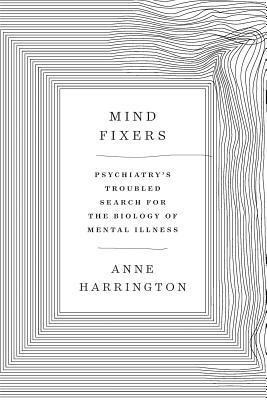All branches of medicine have had high and low points aplenty (with more on the way), psychiatry probably more than most.
The conflict between biological and nonbiological paradigms in the description, classifying and treatment of psychiatric conditions is a very interesting tale with no end in sight.
There are numerous cross-references to this between the two parts of the book – unavoidable given the nature of the subject – but it in fact enriches the flow of the narrative.
The first part, “Doctors’ Stories,” deals largely but not exclusively with the founders of biological psychiatry, those researchers (often neurologists or neuropathologists) who wanted to find an organic, anatomical locus for psychiatric illness as well as to establish a scientific system for behavioral pathology.
The efforts of these psychiatrists, such as Emil Kraepelin, Theodor Meynert and others, while often insightful, were nevertheless in vain and the supporters of nonbiological psychiatry, eg Freudian psychoanalysis, used this opportunity to occupy center stage.
This treatment modality, however, wasn’t exactly a roaring success, to put it mildly.
The effects (now known as PTSD) of two world wars on soldiers’ psyches, together with efforts to prevent and/or treat it, had a profound influence on psychiatry and Harrinton’s description, although brief, is accurate. Unfortunately, neither prevention, cure, or psychoanalysis were successful.
The discovery of psycho-active drugs after WW 2 opened new doors and quickly gained popularity, despite opposition by psychoanalysts. Harrington describes the development of some of these agents, the claims made, the hopes it fostered in patients and families, as well as the inevitable disappointment when the realization dawned that they don’t work for everybody and that some side-effects were intolerable.
The marketing methods of pharmaceutical companies are also discussed, and it is not a good story.
Other treatments were also developed, such as electroconvulsive therapy (also known as shock therapy, a nonsurgical intervention) and prefrontal lobotomy, where nerve tracts from the brain’s prefrontal cortex to the rest of the brain were cut, usually with catastrophic results for the patient – undoubtedly one of the most barbaric episodes in the history of medicine. That the inventor of this method was honored by a Nobel prize certainly isn’t something the Nobel Committee should be proud of.
Part 2, “Disease Stories,” deals with the history of schizophrenia, depression and manic depression (Harrinton’s term), better known as bipolar disease.
Part 3, “Unfinished Stories” has only one chapter, titled “False Dawn.” This chapter essentially deals with what one may call the walking wounded of psychiatric or psychological ailments.
I am not sure that I entirely agree with all Harrington’s thoughts on this matter, but they certainly deserve consideration.
The book is well written and interesting. The author maintains an even, objective tone throughout, although a little bit more sympathy towards psychiatrists would not be amiss – after all, they are mostly trying their best to help. Errors of judgement and inapplicable paradigms are inevitable. Naturally, the harm done to patients must always be kept in mind.
Cognitive behavioral therapy is unfortunately mentioned only in passing, it merits at least a short description, if not more. Also, the various psychiatric ailments should have been described in more detail.
Harrington mentions an objection frequently raised against psychiatry, namely that there are no radiological or blood investigations confirming a diagnosis. Psychiatrists are totally dependent on what the patient and/or the family have to tell.
This situation can cause confusion and misdiagnosis, but Harrington’s argument is not even nearly as clear as she thinks: pain, fatigue, nausea and so on frequently present in doctors’ consulting rooms, are not confirmed by radiology or blood tests, but are nevertheless treated, as they should be.
My main objection to this book is Harrington’s description of a research paper by David Rosenhan, published in 1973 in the influential scientific journal Science.
The title reads: “On being Sane in Insane Places” and goes on to say: “We cannot distinguish the sane from the insane in psychiatric hospitals,” and also “If sanity and insanity exist, how shall we know them?”
In spite of the eye-catching title and profound question, this was in fact one of the most misleading papers in the history of psychiatry, and it took many years to untangle the confusion it caused.
Rosenhan’s thesis was that psychiatric diseases possibly do not exist.
His experiment consisted of having eight healthy people (pseudopatients, in fact) admitted to psychiatric institutions, faking their symptoms during their stay.
According to Rosenhan, none of the psychiatrists twigged what was going on, and as one can expect, this paper made waves for decades afterwards and caused great harm to psychiatry.
The problem, however, is that this “study” was almost certainly a hoax.
Susannah Cahalan published a book about Rosenhan’s study in the same year as Harrington’s book hit the stores: “The Great Pretender: The Undercover Mission that Changed our Understanding of Madness.”
Cahalan initially believed Rosenhan’s claims, but could only find two of the eight people (in fact there were nine) who supposedly took part in the study. Rosenhan was one. A ninth person, who described his experiences in a positive light, was omitted from the results.
The study was almost certainly pure thumbsuck and Cahalan’s conclusion was that Rosenhan was a liar.
Interested readers can consult the two links at the end, the last one written by Cahalan herself.
One cannot blame Harrington for not incorporating Cahalan’s findings in her own book – after all both books were published in the same year and Harrington could not have been aware of Cahalan’s work.
This is a well-written and very interesting book. Readers do not need a knowledge of psychiatry or psychology and, notwithstanding its shortcomings, it should bring the development and problems of this very interesting and essential branch of medicine to a wider audience.
The views and opinions expressed in this article are those of the author, and do not necessarily reflect the position of this publication.




